THE INVENTION OF RADIO 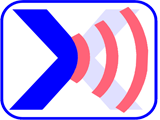

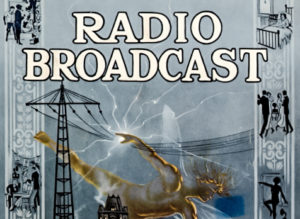
The meaning and usage of the word “radio” has developed in parallel with developments within the field of communications, and can be seen to have three distinct phases, electromagnetic waves and experimentation, wireless communication and technical development, and radio broadcasting and commercialization. Many individuals, inventors, engineers, developers, and businessmen have contributed to produce the modern idea of radio, and thus, the origins and “invention” of the radio are multiple and controversial. Early radio designs could not transmit sound or speech, and they were called the “wireless telegraph.” 
Development, from a laboratory demonstration to a commercial entity, spanned several decades, and this required the efforts of many practitioners. In 1878, David E. Hughes noticed that sparks could be heard in a telephone receiver, when experimenting with his carbon microphone. He developed this carbon-based detector further, and he eventually could detect signals over a few hundred yards. He demonstrated his discovery to the Royal Society in 1880, but he was told that it was merely induction, and therefore, he abandoned further research. 
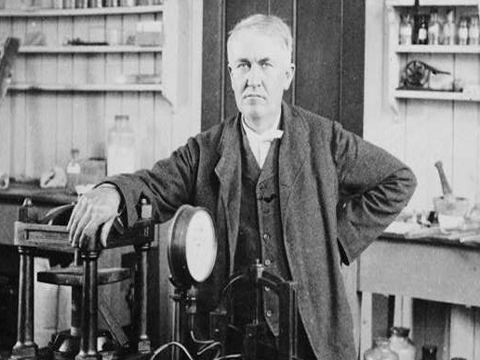 Thomas Edison Thomas Edison |
Experiments, later patented, were undertaken by Thomas Edison and his employees of Menlo Park. Edison applied in 1885 to the U.S. Patent Office, for his patent on an electrostatic coupling system between elevated terminals. The patent was granted as U.S. Patent 465,971, on December 29, 1891. The Marconi Company would later purchase rights to the Edison patent, to protect themselves legally from lawsuits. 
In 1893, in St. Louis, Missouri, Nikola Tesla made devices for his experiments with electricity. Addressing the Franklin Institute in Philadelphia, and the National Electric Light Association, he described and demonstrated the principles of his wireless work. These descriptions contained all of the elements that were later incorporated into radio systems, before the development of the vacuum tube. He initially experimented with magnetic receivers, unlike the coherers (detecting devices consisting of tubes filled with iron filings, which had been invented by Temistocle Calzecchi-Onesti, at Fermo, in Italy in 1884) used by Guglielmo Marconi, and other early experimenters. 
 Tesla demonstrating wireless transmissions during his ‘high frequency and potential’ lecture of 1891. After continued research, Tesla presented the fundamentals of radio in 1893. |
A demonstration of wireless telegraphy took place in the lecture theater of the Oxford University Museum of Natural History, on August 14, 1894, carried out by Professor Oliver Lodge, and Alexander Muirhead. During the demonstration, a radio signal was sent from the neighboring Clarendon laboratory building, and it was received by apparatus in the lecture theatre. 
In 1895, Alexander Stepanovich Popov built his first radio receiver, which contained a coherer. Further refined as a lightning detector, it was presented to the Russian Physical and Chemical Society on May 7, 1895. A depiction of Popov’s lightning detector was printed in the Journal of the Russian Physical and Chemical Society, that same year. Popov’s receiver was created on the improved basis of Lodge’s receiver, and it was originally intended for reproduction of his experiments. 
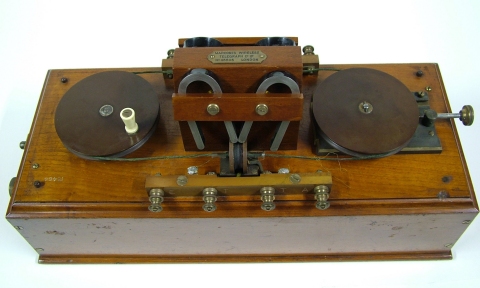 Marconi’s Radio Marconi’s Radio |
In 1895, Marconi built a wireless system capable of transmitting signals at long distances (1.5 mi./ 2.4 km). In radio transmission technology, early public experimenters had made short distance broadcasts. Marconi achieved long range signalling due to a wireless transmitting apparatus, and a radio receiver claimed to be invented by him. From Marconi’s experiments, the phenomenon, that transmission range is proportional to the square of antenna height, is known as ” Marconi’s law.” This formula represents a physical law that radio devices use. Marconi’s experimental apparatus proved to be a complete and commercially successful radio transmission system. In 1896, Marconi was awarded a British patent for “Improvements in transmitting electrical impulses and signals, and in apparatus therefore,” for his radio. In 1897, he established a radio station on the Isle of Wight, England. Marconi opened his “wireless” factory in Hall Street, Chelmsford England, in 1898, employing around 50 people. Shortly after the 1900s, Marconi held the patent rights for radio. 
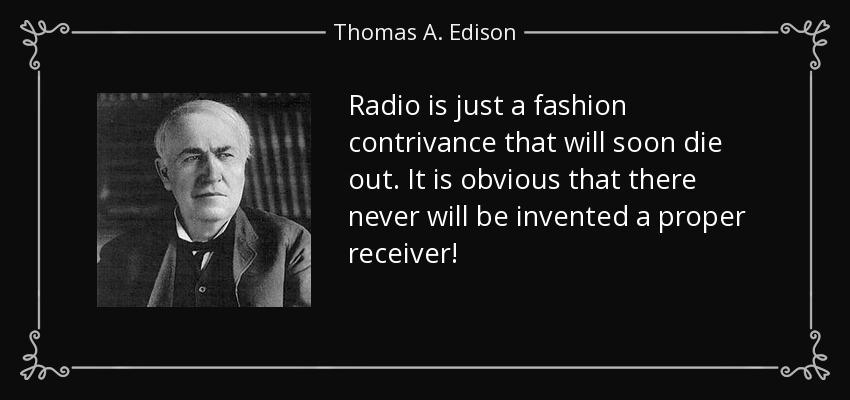
Edison was very wrong about that! 
1. The term ‘radio’ refers to:
a) only to car radios
b) only to radioactive materials
c) many developments within the field of communication.
2. The invention of the radio is attributed to:
a) only Thomas Edison
b) many people who contributed to the modern idea of the radio
c) only The Marconi Company
3. In 1893, Nikola Tesla experimented with…
a) making really cool cars
b) vacuum cleaners
c) electricity
4. One of the earliest demonstrations of telegraphy (1894) sent a radio signal:
a) around the world.
b) from a laboratory building to a nearby lecture theatre.
c) across the United States.
5. Marconi built a wireless system capable of transmitting signals:
a) about 200 feet
b) about 150 miles
c) about 1.5 miles
6. Shortly after the 1900s, the patent rights for radio were held by:
a) Marconi
b) Edison
c) Popov




















